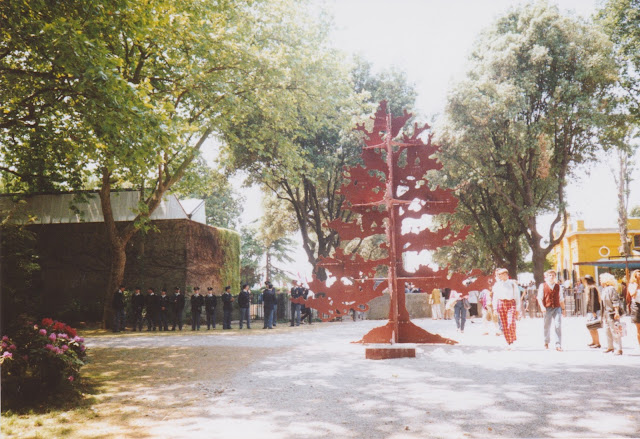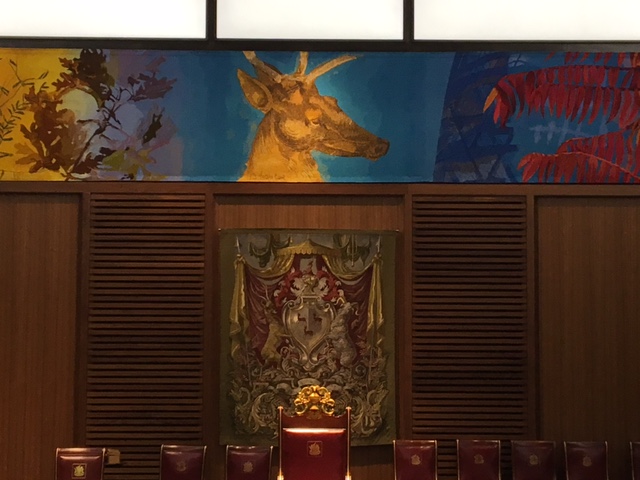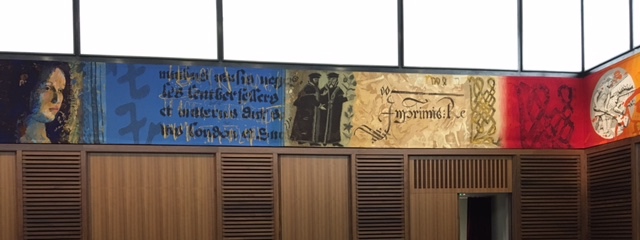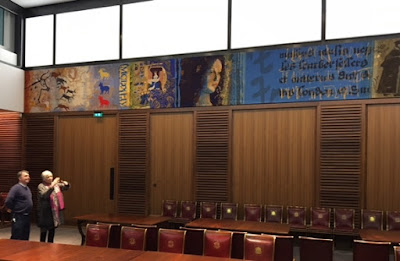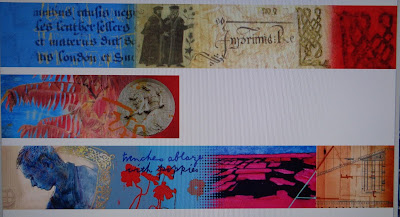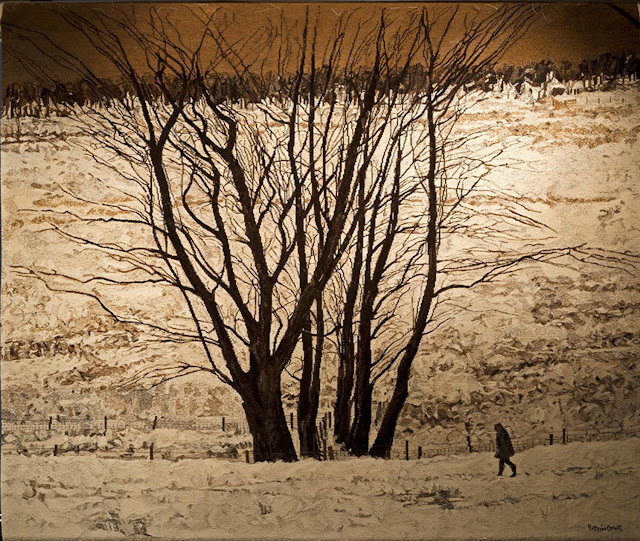The beautiful Hudson Valley north of Manhattan is full of galleries, big & small.
Within 5 miles we currently have a huge retrospective of the famous Andre SERRANO & a small but terrific photography show celebrating New York City.

SERRANO is of course best known as the controversial "Piss Christ" picture from 1987. In fact it could have been lemonade or Pepsi! But the bubbles etc and its taboo violating aspect made his name. Especially when he went on to create Black Supper; a beautiful classical statue of a Madonna & Child; Crucifixion and in 1990, Piss Pope.
His photos, beautifully displayed at the impressive JACK SHAINMAN GALLERY - The School in Kinderhook, here date from early 1980s up to 2015.
Heaven & Hell, a pigment print from 1984 juxtaposes a suggestive nude with a red robed bishop - so this 'religious edge' was present early on. In fact as u enter u are greeted by a huge 225 in long BLACK SUPPER (immersions) 1990.
Downstairs later work from 2002 just after 9/11 celebrates NY's personalities: Postman, cook, Sikh, woman airline captain, detective, bishop, etc. These are large scale, dramatic portraits.
Some more worrying than others.
Serrano explains his work well and one of the joys of the show is the excellent explanatory labelling - really good. Re American, he says, " I wanted to define ‘Americans.’ So I started with the obvious symbols of September 11th – the fireman, the policeman, the soldier, the airline pilot – a man who is a Sikh but happens to look like a Taliban because we were all concerned about the Taliban in 2001. And then I went on to photograph people from all walks of life. There are over 100 portraits in America.”
Also on show a disturbing series 1995 History of Sex and recent staged images Torture. He explains, "Usually, when I’m in my studio, the assistant sets up the
equipment, takes a Polaroid and shows it to me.
I don’t meet the model until I’m ready to take the picture because
that’s the most important time, the only time that matters. That’s when I get to know my models, when I
take their picture, and later, when they become part of my work and I speak
about them and remember them. I live
with their images and they become my friends, my family, my memories and my
art.”
The Sex pictures are taped over with bright red repair to vandalism- which almost looks as tho it was originally intended. Maybe better that way, and why Serrano has retained the red slashes of tape.
This is a difficult show so needs more than a first surface reaction. Pushing boundaries, shocking the neighbos etc, requires more than the superficial freedom of expression argument.
EYES OF THE CITY
at DAVIS ORTON GALLERY, HUDSON, NY.
at DAVIS ORTON GALLERY, HUDSON, NY.
RICHARD SANDLER has spent the last 35 years recording events: the 1980s graffiti spray paint encrusted subway - before cell phones or digital cameras. These silver gelatin prints capture the feel of those days before Manhattan was tamed.
As he says,"NYC was a mess. Above & below ground, crime and crack were on the rise, rents were cheap, many were homeless, & tourists avoided the city." Times Square & the East Village, though dangerous, were also a haven for an edgy art scene with dozens of galleries & music clubs. In mid-town & on Wall Street the rich wore gaudy furs, & like now, the extremes of wealth & destitution were on parade. My favourite - of Grand Central. Such a famous place but a unique, perfect shot.
Sandler shot 4 – 5 rolls of film everyday: what a historic documentation! His book, The Eyes of the City was published in 2016 by PowerHouse Books.
Peter DONAHOE was also a street photographer in NY in the 1970s & 80s while driving a nightime Checker taxi at the start of the Reagan recession when it was impossible to get photography work. These silver gelatine prints appeared in the 1990 monograph The Night Line "We were the surplus labor population that got New Yorkers where they wanted to go,” he remembers.
 Driving a cab gave Donahoe the chance to record working class life & the streets of Manhattan from an unusual perspective, sometimes dangerously so. The images are now in the Museum of the City of NY.
Driving a cab gave Donahoe the chance to record working class life & the streets of Manhattan from an unusual perspective, sometimes dangerously so. The images are now in the Museum of the City of NY. 
Donahoe, who studied at Pratt Institute, now works with pinhole cameras, creating special portraits & Hudson Valley barns & landscape.
SUSAN BOWEN documents NY today, in New York Walking. Her focus is people in motion, the intense pace & vitality of urban life. "I like the spontaneous, to shoot fast & furiously, to be swept up in the tide of the moment, " she says.
On busy street Manhattan corners, Bowen - tall- gets down on the sidewalk to record the swirl of activity from a very low vantage point; she crouches on the ground with a small tripod.
Legs Legs! All racing somewhere.
WILLIAM HELLERMANN
In the 1980’s, William Hellermann did a lot of walking around New York City, especially Hell’s Kitchen, at night, shooting 35mm Kodachrome slides. He was fascinated by small buildings, mom & pop stores, the sole-proprietor shops & Irish bars.
These were shops & bars with failed dignity; hopeless enterprises. In the 80s he shot them head on. Glowing colour slides. What an impact! 
Sadly he died just before this show, aged 78. Hellermann was also a well known experimental composer. As a curator at PS 1 in NY, & the Clock Tower, + Alternative Museum, he launched some of the first exhibitions of sound sculpture & audio art, & brought into usage the term “Soundart.”
Here is Richard Sandler studying Hellermann's work.

























